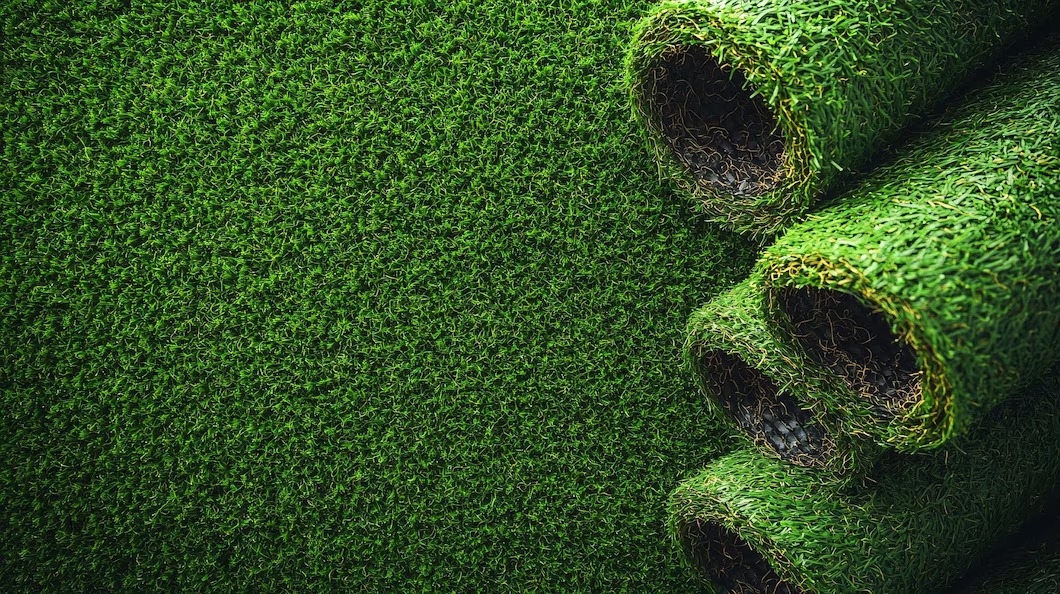Artificial turf installation has become increasingly popular, offering a low-maintenance, evergreen alternative to natural grass. However, achieving a professional-looking artificial lawn requires proper planning, preparation, and installation. To ensure your artificial turf installation looks natural, lasts for years, and provides a safe surface, consider these essential tips for success.
Proper Planning and Measurement
Before starting the installation process, precise planning and measurement are crucial. Begin by sketching a layout of the area where you plan to install the turf. Measure the dimensions of the site accurately, ensuring you purchase enough turf material. This step prevents over-ordering or running short on turf, saving both time and money.
Pro Tip: Add an extra 10-15% to your measurements to account for errors and trimming around obstacles like flowerbeds, pathways, or trees. This buffer ensures you have ample material to cover the entire area seamlessly.
Clear the Installation Area
Clearing the area is one of the most critical steps in artificial turf installation. Remove all existing vegetation, rocks, roots, and debris. A clear, clean base guarantees a smooth surface for the turf, minimizing bumps and irregularities. Additionally, you might want to consider using a weed barrier fabric to prevent any unwanted growth from popping through the artificial grass.
Pro Tip: Use a sod cutter to remove old grass effectively, making the process quicker and more manageable, especially for larger spaces.
Create a Solid Base with Proper Drainage
For a successful artificial turf installation, building a solid base with proper drainage is paramount. Begin by spreading a layer of crushed stone or gravel evenly across the area, ensuring it is at least 2-4 inches thick. This layer serves as a foundational base that supports the turf and facilitates drainage. Proper drainage prevents water pooling and enhances the turf’s longevity.
Pro Tip: Use a compactor to compress the base layer. A well-compacted base helps to avoid any future settling, maintaining a level turf surface.
Install an Appropriate Weed Barrier
To keep your artificial turf installation looking pristine, consider installing a weed barrier or landscape fabric over the compacted base. This barrier acts as a shield, preventing weeds and other unwanted plants from growing through the turf. It saves you maintenance time and keeps your artificial lawn looking neat and uniform year-round.
Choose High-Quality Turf Material
Not all artificial turf products are created equal. Opt for high-quality turf that resembles the natural grass in terms of color, texture, and density. Quality turf typically features UV resistance, which protects it from fading in the sun, and durable backing that ensures its longevity. Although quality turf may cost more initially, it pays off in durability and realistic appearance over time.
Pro Tip: Select turf with varying blade heights and colors for a more natural look, as uniform blade heights can make the installation appear less realistic.
Proper Turf Placement and Seaming
Lay the turf rolls in the direction you desire, ensuring the grain of the turf blades is aligned. For areas requiring multiple turf pieces, pay close attention to the seams. Overlap the edges slightly and trim both pieces with a sharp utility knife for a clean seam. Use strong outdoor adhesive or seam tape to secure the seams, pressing them firmly together to prevent them from becoming visible.
Pro Tip: Ensure the turf rolls face the same direction to maintain a consistent look. Misaligned turf grains can result in an unnatural appearance.
Secure the Turf with Nails or Staples
Once the turf is in place, secure it around the perimeter and across the seams using galvanized nails or turf staples. Space the nails or staples about 6-8 inches apart to anchor the turf firmly to the base, preventing any movement. Ensuring a tight fit is key to a smooth, even surface.
Pro Tip: Drive the nails or staples deep enough so that they do not interfere with the turf blades. This avoids any potential tripping hazards and keeps the installation aesthetically pleasing.
Add Infill for Stability and Comfort
Infill, such as silica sand or rubber granules, is spread across the turf to add weight, improve stability, and keep the turf blades upright. Choose an appropriate infill material based on the turf’s intended use – sand provides a natural feel, while rubber adds cushioning for activities like sports or play areas. Use a spreader to distribute the infill evenly, and brush it into the turf with a stiff-bristle broom to ensure it reaches the base.
Pro Tip: Regularly brush the turf to keep the blades upright, enhancing the lawn’s natural look and feel.
Inspect and Perform Regular Maintenance
After completing the installation, inspect the turf for any uneven spots, exposed edges, or loose areas. Addressing these issues promptly ensures a long-lasting, professional-looking surface. Although artificial turf requires minimal maintenance compared to natural grass, occasional brushing, rinsing, and debris removal will keep it looking its best.
Choose the Right Tools for the Job
Using the right tools is essential for a smooth artificial turf installation. Basic tools like a utility knife, sod cutter, compactor, tape measure, and stiff-bristle broom will streamline the process and provide a professional finish.
Conclusion
Installing artificial turf is a rewarding project that offers a beautiful, low-maintenance landscape solution. By following the proper steps, from preparing the base to selecting high-quality turf and securing it correctly, you can create a lush, natural-looking lawn that withstands the test of time. Investing effort into meticulous planning, using the right materials, and performing occasional maintenance will ensure your turf installation remains vibrant and functional for years. Whether you’re transforming a backyard, playground, or sports field, these tips will guide you toward a professional and successful artificial turf installation. Enjoy the benefits of a green, hassle-free space that enhances your outdoor living experience.

